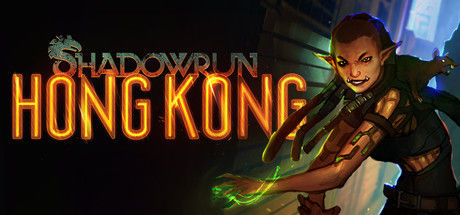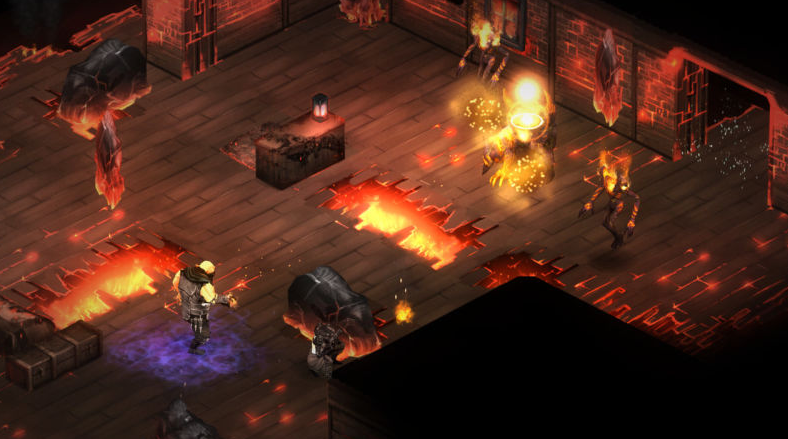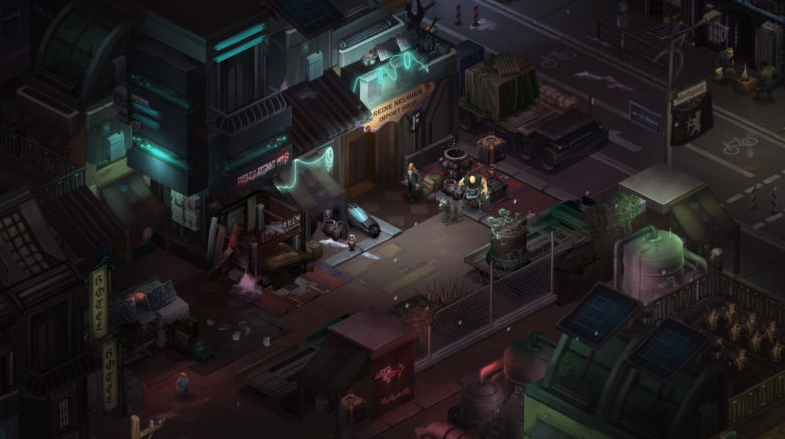Shadowrun: Hong Kong is the third entry in HareBrained Schemes’ Shadowrun series. The technical and design framework is mostly identical to the previous Shadowrun: Dragonfall – Director’s Cut. In this story, which is except for a few references and recurring minor characters unconnected to the predecessors, the player character travels to Kong Kong on request by his/her former foster father Raymond Black. After meeting up with Duncan Wu, who used survive together with the player character in the Seattle slums, things go very wrong: The Hong Kong Police shoots one of Wu’s associate as well as half of a Shadowrunner team employed by Black. Branded as terrorists, they have no choice but to seek the help of a Triad crime boss in order to erase their identities and start their search for Black…
The basic gameplay formula is unchanged: the team takes on a number of unconnected missions until the plot is concluded during the last few missions. There are also three missions especially associated to the main team members. Between runs, the player returns to the hub (a Triad controlled district) in order to receive rewards for successful runs, chat up people and stock up on equipment. While many runs can be solved with minimal combat by choosing the correct dialogue options or having the team members with the required skills, there will be times when the player has to engage in turn-based combat. This part of the game is relatively straightforward: each combatant has a number of action points which can be used to either move or use skills in order to win the fight. The available skills depend on the used weapons respectively if they were unlocked during character development; the primary team members also have unique abilities. Solved tasks reward karma points (combat in itself does not) which are directly used to advance in the skill trees, e.g. quickness improves ranged combat and charisma gives more taking options and allows to summon spirits. Each of the superordinate skills (except body which mostly influences hit points) are the main stat for one of the class archetypes, but skill distribution is free.
The biggest difference to Shadowrun: Dragonfall – Director’s Cut is the redesigned matrix which has similarities to a stealth mini game. The defense mechanisms move in fixed patterns and have a cone of sight which needs to be avoided. When the decker is spotted, this has two disadvantages: combat starts (it ends either when killing all opposition or reaching the next part of the matrix) and the decker is slowly recognized by the main system. This attention is represented by a number, which rises during each round a defense mechanics can spot the decker, and if it hits the roof, the alarm is sounded and the big guns are brought in to defend the intruder. Before the decker can access datacores and other mechanisms in the matrix, there is a hacking mini game to solve (basically a combination of Simon Says and pattern recognition). Other additions are a few narrated cutscenes, some minor UI changes, the ability to initiate combat while hostile creatures are on screen but have not spotted the team yet, cyberweapons (cyberware close combat weapon) and a cyberware skill tree. The game also changes a bit of its core balance: in contrast to the predecessors, there are few item pickups during the missions and money rewards are low.
Cover Art:
Screenshots:




